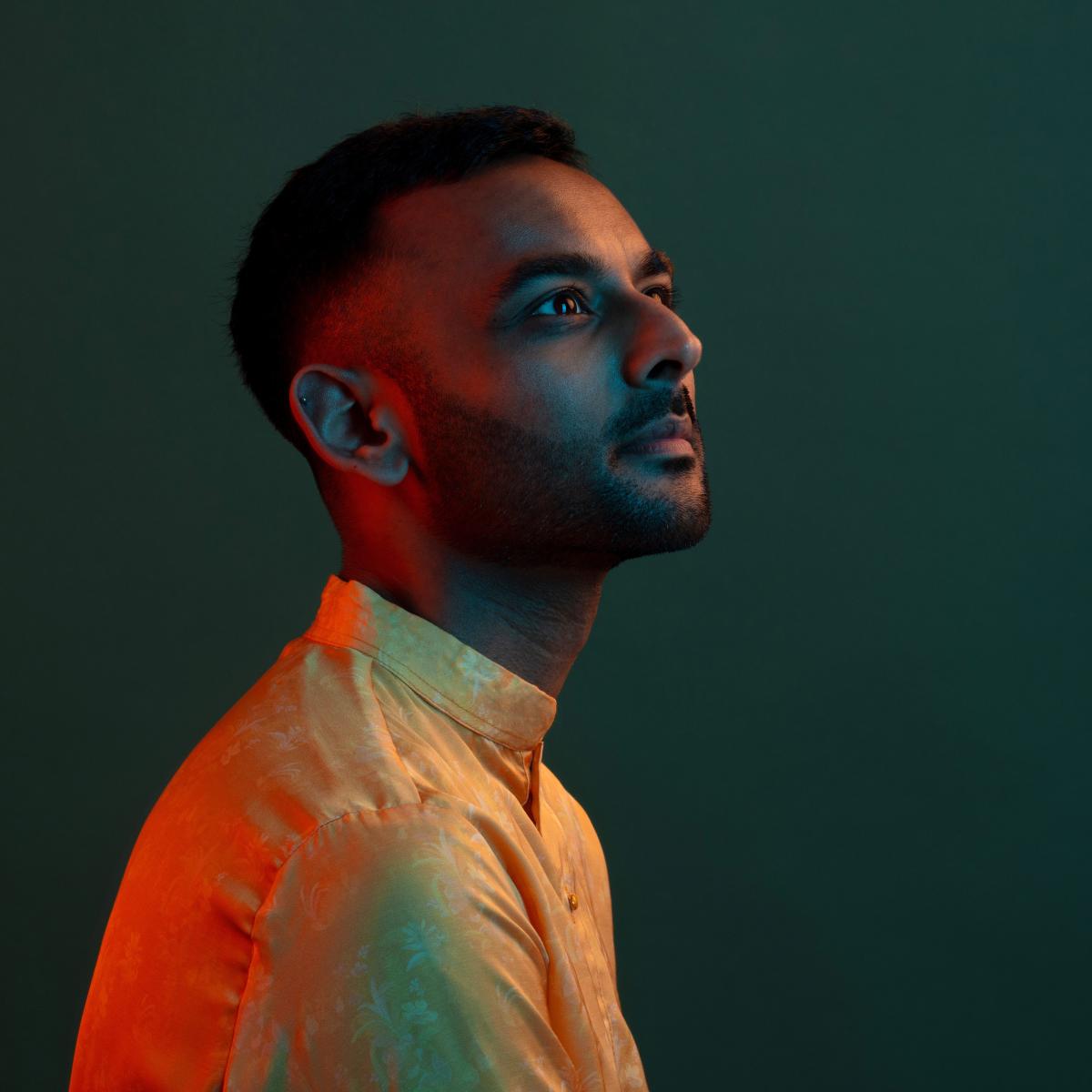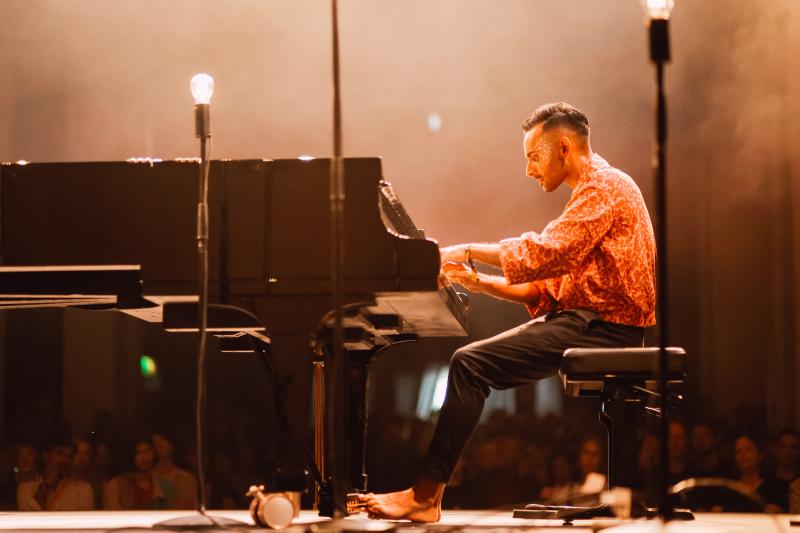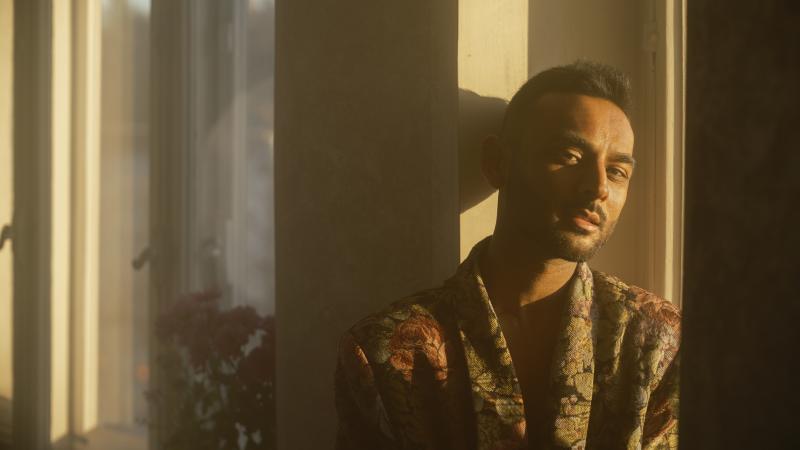Keval Shah: With creative freedom, you aren’t bound by the score
Keval Shah is a classically trained pianist and Lecturer of Lied whose work continually pushes against stylistic boundaries and genres. This interview launches a three-part article series in which Shah explores the global reality of classical music today – and the creative possibilities that emerge when artists dare to work between musical worlds, across perceived boundaries of genre, language and culture.

In this opening article, Keval Shah asks whether we treat musical material as a historic object in a certain form, or if we are using musical material to create sonic experiences which are alive to a moment in time.
Can you reflect on a moment when you first felt the limits of tradition – or when you realised music could exist between categories?
I am a classically trained pianist and my particular focus for the last decade or so has been in the world of song or lied. And that, at least in recent decades, has had quite a fixed performance practice.
The impulse for me pushing against boundaries has come from recognising in other musicians and in other disciplines just how borderless music can be. Particularly excitingly, my great colleague Natasha Loges, who is professor in Freiburg and who has been a regular visitor here in Sibelius Academy, recently opened my mind to the borderless global nature of the lied, the song repertoire itself – this music for voice and piano.
Even within this classical genre, I’ve been fascinated by the international nature of the repertoire – discovering pieces from parts of the world where I didn’t know this music existed and finding in this repertoire evidence of cross-cultural musical influence. That’s made me genuinely excited and curious about what musical practice can look and sound like when it dares to move beyond preconceived notions of genre or stylistic boundaries.
In the last few years, I’ve also been grappling with my own identity in a way, and with the relationship between my cultural roots as an Indian person and how that informs or doesn’t inform my artistic practice.
Reconciling my identity has opened my imagination to how I might bring elements of my Indian culture into my musical practice.
For many years I had been consciously or unconsciously making a clear separation between who I am at home and who I felt I needed to be in order to be on stage playing Schubert or Brahms songs – or whatever.
Reconciling my identity has allowed me to play that repertoire with much more confidence, but it’s also opened my imagination to how I might bring elements of other cultures, including those of my own heritage, into my musical practice.
I have also met composers who work across musical languages, particularly my friend and collaborator Reena Esmail, who trained at the Juilliard School in Western classical composition and in India in Hindustani classical music. She now writes in a sort of bilingual way and discovering her music and way of working across cultures, musical languages and styles has really opened a new door into how I might work.
Do you feel that what we call “tradition” today is sometimes more of a fossil than the real living practice?
I think we have to be very careful when we define tradition and when we analyse how old a tradition actually is. Very often, the things we consider traditional and which we value highly turn out not to be that old at all.
For example, I’ve become very interested in the lied recital as a performance practice and how it has evolved since the mid-19th century. Around this time, lied entered public concert life, moving from its origins in private salons or domestic settings, and the ways in which lied has been programmed since this time have constantly evolved.
However, I was educated in an environment that implicitly suggested the lied recital has always been a fixed tradition – that we programme the repertoire in a certain format, perform it in a certain way, and view that as a strong, established tradition.
Then I realised that this so-called tradition only really emerged in the 1950s. It’s actually a relatively new phenomenon. The more complete story is that this performance practice has been constantly evolving.
That understanding makes me, as an artist in 2025, feel both a certain degree of autonomy and responsibility to continue evolving the practice – and to stay alert to the factors that shape its ongoing transformation.
I’m more interested in this music as something living and expressive than as a tradition or object that needs to be preserved.
I don’t think we need to be scared of changing things. Sometimes I wonder if, in this current climate of funding scarcity and worries about the status of music in relation to wider culture, our fears make us prone to insularity and a kind of self-preservation mode.
But the idea of preservation is what makes something fossilise. Personally, I’m more interested in this music as a living, breathing, expressive performance mode than as a tradition or object that needs to be preserved.
There’s absolutely nothing wrong with being fascinated by historic objects. After all, we can be very proud of institutions like museums. They are full of historic objects, which allow us to engage with the past and learn from its stories – and find meaning for ourselves in the present.
But as performing artists, we should be at least conscious of our relationship to musical material: are we treating it as a historic object to preserve in a certain form, or are we using it to construct a sonic experience which is new for the time in which we are living?
I believe it’s possible as an artist to move between those worlds. What matters is being conscious of the choices we make, and understanding the implications of our choices.
It feels strange to attempt to recreate the static nature of museum objects in the context of live performance, because the very presence of breathing bodies, the physicality of music making suggests to me that there’s the possibility of something more spontaneous, alive to this moment in time.
That doesn’t mean discarding the musical material. It’s about how we use it to create something that truly resonates. It’s less about relevancy – and more about resonance.
If we brought those skills back into classical music training at the Sibelius Academy, how might it change the way young musicians grow?
I think we’re really lucky at the Sibelius Academy to have many inspiring teachers who are already thinking about the ways in which musical practices can be shared with our students in a way that allows them to become as well-skilled and versatile as possible.
For example, many of our students are already taking part in courses on free improvisation. Classical music students get to step out of their comfort zone of responding to notation and to generate musical material from their own bodies and spirits.
The more we do that, the more empowered, I hope, our students feel to realise they have creative autonomy. I feel very strongly that developing a sense of musical freedom – and discovering creative freedom through skills like improvisation and composition – allows performers who work with notated music to find greater freedom within the notation itself.
Otherwise, the notation of other composers’ material can become a bit of a prison. For a lot of students, and I’ve seen it in myself as well, the notation can become a barrier to actual music-making.
Through improvisation and composition, performers can find greater freedom within the notation itself.
Someone like Tuija Hakkila, Professor of Piano and my dear colleague in the Piano department, is so experienced and knowledgeable about keyboard music across the historical span. She plays and teaches with such creative freedom because she isn’t bound by the score.
Tuija understands what the notated material offers us as performers, and she also understands the limitations of the notation.
Even when she plays fully notated music – like the amazing album of Haydn sonatas she’s recorded – I can hear in her approach this deep knowledge and understanding of the absolute importance of imagination. It’s an imagination that doesn’t come from the notated score, but from her own inner musical world.
It’s a kind of musicality that you discover primarily through improvisation and truly absorbing a musical language.
What draws you to revive the tradition of improvisation, and what role does it play in your artistic development and practice?
I talk a lot about musical languages these days, because I’m very aware of my own limitations as a musician. When I speak, I don’t need a script. I have a feeling or an idea, and because I’m so at home in the verbal language, my words just flow naturally. They’re directly connected to what I feel or think. I have an idea in my head, I breathe and then I speak.
As a musician, I would love to find that same sense of fluidity, where an expressive idea manifests itself in sound. And for that to happen, I need the same kind of fluency in my musical language as I have in my verbal language.
It’s not enough to understand a composer’s language theoretically. I also need to have tactile experience of working with that musical language so that I can improvise at the piano – just like I’ve constantly improvised what I say in words.
I have an idea and then I speak. Then I come to the piano and think “my gosh, but improvisation. I’m terrified of this. What do I do?”
It’s about getting to know the language and understanding the harmony and language of that style, and this style. With those different languages, you then can create new music. This is what I am trying to do. But I’m at the beginning of this process and interested in seeing how it will shape my musical path going forward.
I want to have this ability to freely create because that connects me again to my own tradition.
In the 19th century, it was common practice in concert programmes that pianists would improvise. And that’s a practice that we have largely lost.
* * *
Keval Shah
British-Indian pianist Keval Shah (b. 1993) is celebrated for the intellectual and creative depth of his artistic vision. A laureate of multiple international competitions, Shah has performed at many of Europe’s major concert halls and festivals, and has recorded for labels including Deutsche Grammophon.
Alongside successes in the traditional field, Keval is a pioneer in concert design and curation, regularly commissioning contemporary music and building artistic projects that mix different genres, cultures, and philosophies. His musical practice is guided by a fascination with cross-cultural and multi-cultural processes, and the artistic and social possibilities which can be found therein.
Alongside his work at the Sibelius Academy, Keval is a regular visiting teacher at conservatoires and universities across Europe, and frequently works as a broadcaster at the BBC, most recently presenting a documentary about Kaija Saariaho’s final projects.

